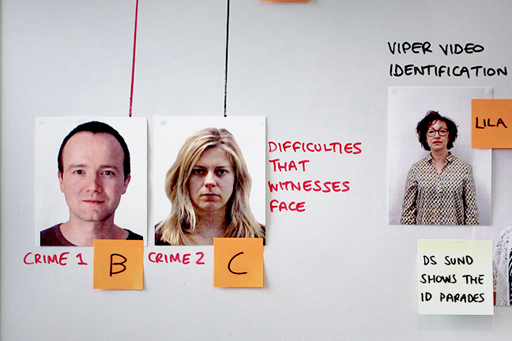2.9 Identification skills test: answers

The correct answers for the four staged crimes/ID parades were:
- Crime 1 – this was a sequential presentation – the correct answer was ‘B’
- Crime 2 – this was a simultaneous presentation – the correct answer was ‘C’
- Crime 3 – this was a simultaneous presentation – the correct answer was that the perpetrator was not present
- Crime 4 – this was a sequential presentation – the correct answer was that the perpetrator was not present.
Psychological research suggests that using a simultaneous presentation makes it more likely that a witness will select a face even if the perpetrator is not present. In the current task, that would mean you should have been more likely to make an incorrect identification for for crime 3 (which had a simultaneously presented line-up) than crime 4 (which had a sequentially presented line-up).
Remember that when researching eyewitness identification, it’s important to include a line-up that that does not contain the perpetrator, as this reflects the scenario of an innocent suspect (i.e. someone who is not the perpetrator) being investigated by the police (Steblay, Dysart, and Wells, 2011).
Did your decisions match this prediction? If not, it could be that you put the knowledge you have gained about psychology and investigations to good use!
The factors outlined here indicate the difficulties that witnesses face in providing accurate identification evidence, and also how careful the police have to be in constructing and conducting identification procedures.
